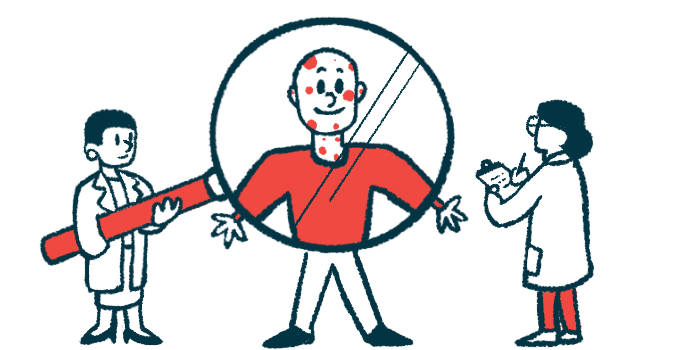No anesthesia complications cited in surgery for LOPD patient, 47
Case study details successful protocol for man with broken arm

No anesthesia complications were reported and surgery was successful for a man with late-onset Pompe disease and airway problems who broke a bone in his upper arm, according to a case report from Spain.
The man, 47, underwent surgery for the broken left arm under a combined anesthesia approach after clinicians ruled out structural heart disease and cardiovascular manifestations. His healthcare team noted that patients with Pompe disease are at higher risk for anesthesia complications, and highlighted the need for adequate presurgery testing and review.
“It is essential to perform a comprehensive preoperative study in order to reduce the risk of perioperative [around the time of surgery] morbidity and mortality, and to obtain as much information as possible for the surgical procedure,” the team wrote.
The report, “Anaesthetic implications for Pompe disease. A case description,” was published in the journal Revista Española de Anestesiología y Reanimación, also known as the Spanish Journal of Anesthesiology and Resuscitation.
Combined anesthesia approach results in no complications during surgery
Pompe disease typically leads to respiratory problems due to the weakness of the muscles involved in breathing. In severe cases, it can lead to respiratory failure. Managing anesthesia in Pompe patients is considered “a challenge, as there are no generalised standards to follow,” the researchers wrote.
Now, a team at Hospital Universitario de Valme, in Sevilla, reported the case of a Pompe patient who was diagnosed after showing symptoms compatible with muscle disease. Genetic tests showed he carried two different mutations in each GAA gene copy.
His symptoms had included a moderate impairment in his breathing capacity and paroxysmal atrial fibrillation — when a rapid heart rate begins suddenly and then stops within seven days. No signs of structural heart disease or any aneurysm, which is a bulging in the wall of a blood vessel, were detected.
The man was being treated with Myozyme (alglucosidase alfa, marketed as Lumizyme in the U.S.), as well as bisoprolol — a beta-blocker medication used to treat high blood pressure. He also was taking aspirin, officially low-dose acetylsalicylic acid.
Following an accidental fall that resulted in pain and an inability to move his left arm, the patient was admitted to the emergency department. X-rays confirmed a fracture in the humerus — a long bone in the upper arm.
In an examination prior to anesthesia, the man was found to have predictive parameters for a difficult airway. These included a limited mouth opening and upper front teeth protruding outward. The patient’s lower jaw also was set back compared with the upper jaw, a condition identified as slight retrognathia. Individuals with this condition appear to have a severe overbite.
His healthcare team noted that difficult airway management — difficulties with mask ventilation and/or intubation — present the greatest anesthesia-related complication for Pompe patients.
The exam also found an overall reduction in vesicular breath sounds and a low heart rate, known as sinus bradycardia. Blood work was normal.
As he was clinically stable, the team decided to perform surgery for his bone fracture following a pre-surgical fasting.
It is important to highlight that the pharmacological treatment used for anaesthetic management should be chosen with caution considering the existence of cardiovascular or generalised complications of the disease.
Preventive treatment with the antibiotic cefazolin was provided to reduce the risk of infections, along with ranitidine to prevent inhalation of gastric contents into the respiratory tract.
A first anesthetic technique of the arm, called brachial plexus block, was conducted without incident using ropivacaine and mepivacaine.
Next, general anesthesia was induced, with oxygen ventilation, with a mix of two anesthetics — lidocaine and propofol — along with the muscle relaxant rocuronium. He also was placed under mechanical ventilation with intubation. Anesthesia was maintained with remifentanil.
“It is important to highlight that the pharmacological treatment used for anaesthetic management should be chosen with caution considering the existence of cardiovascular or generalised complications of the disease,” the scientists wrote.
During surgery, his heart rhythm, oxygen levels, and blood pressure were continuously monitored. The bispectral index, commonly used to monitor the depth of anesthesia, was used during surgery, as was a peripheral nerve stimulator, also called train of four, which assesses the degree of muscle relaxation. No extra muscle relaxant was administered during surgery.
Overall, the surgery took two hours (120 minutes). After surgery, maintenance anesthetics were withdrawn, and analgesic (painkiller) rescue was provided with metamizole and dexketoprofen. Residual neuromuscular blockade was reversed with sugammadex, achieving a train of four score ratio higher than 0.9. A ratio above 0.70 means there was an adequate recovery of neuromuscular function.
The patient had the breathing tube removed and was transferred to the post-anesthesia recovery unit. He then had good respiratory mechanics, stable blood flow, and optimal oxygen levels in the blood.
No incidents were reported during the post-surgery period or during his time in the hospital ward, the researchers noted.






